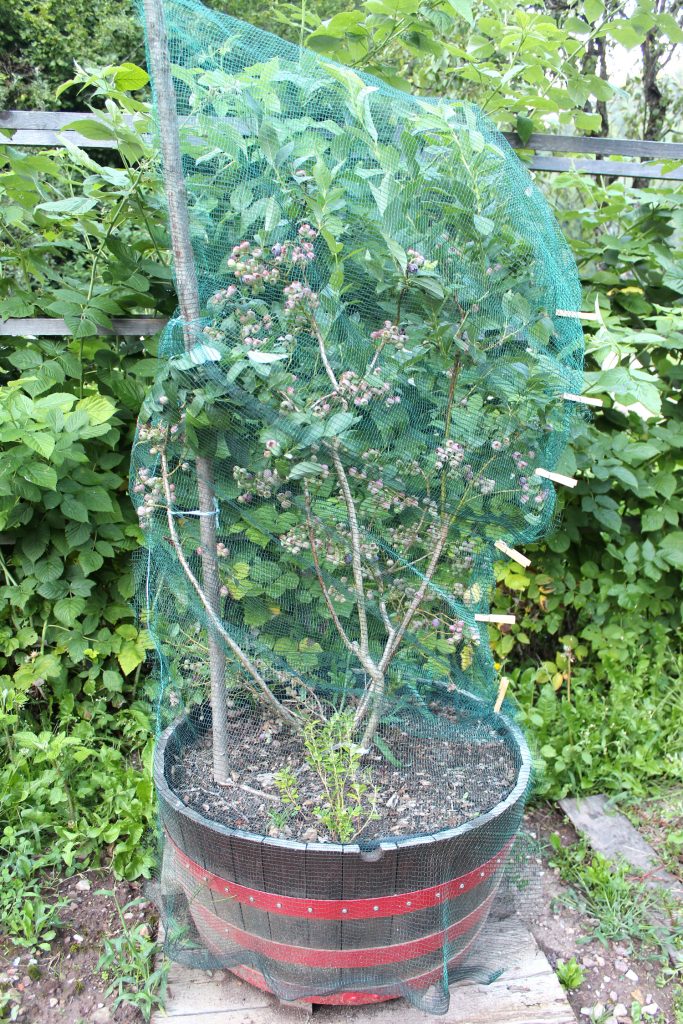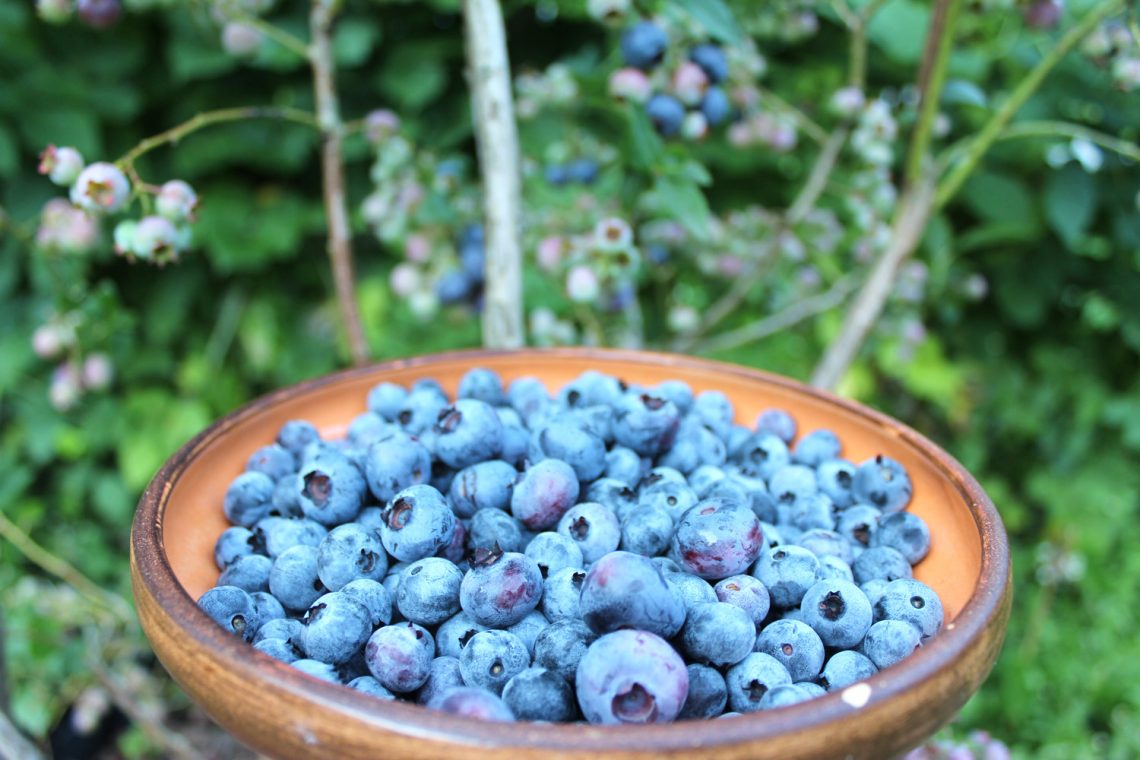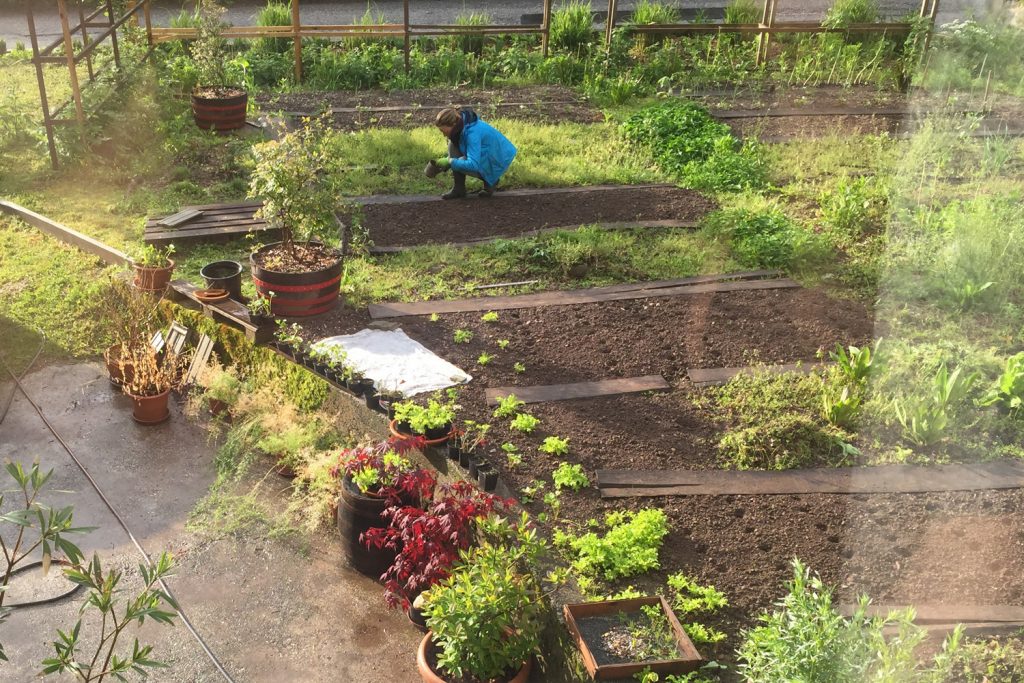Blueberry – my first plant of the week. If things go according to plan, I’ll be researching and introducing one plant a week that I’ll (how surprisingly) call Plant of the week. This will either be a vegetable, fruit, herb or even decorative or wild-grown plant.
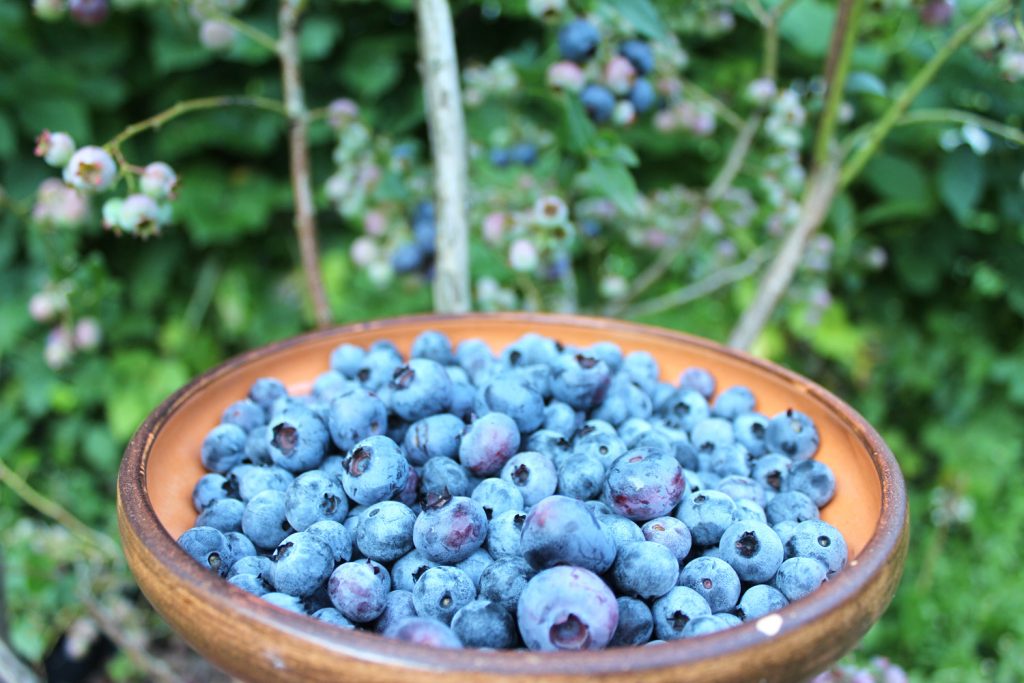
WILD BLUEBERRY’S FAT COUSIN
Today, in sync with the season i’m starting the Plant of the week series with the plant that I wasn’t too fond of until recently. This is cultivated (highbush) blueberry – the “fat cousin” of wild (lowbush) blueberry, which we also call the forest blueberry because (not like the cultivated variety) they can be found in the forests all accross Slovenia. Cultivated bluberries are also called American blueberries around here. Maybe it’s due to their name or foreign ancestors but I found cultivated blueberries strange and uninteresting for a long time. Maybe it was due to their way of planting or the need of acidic soil and therefore require a special place in the garden or even it’s own container. Although I’m a big fan of wild (forest) blueberries and I pick and eat them constantly when they’re in season, i hardly ever ate cultivated blueberries. We hada sall blueberry bush at my parents’ house but it never beared fruits or maybe we were always too late to protect it from greedy birds who ate all the berries before we even noticed them?

HOW TO GROW BLUEBERRIES?
Anyway, as I was saying, blueberries weren’t on my radar until last year when I planted two plants in pots and placed them at the edge of my garden. The pots are made from old wine barrels that we salvaged from the house where Aljaz’s grandmother was born. We sawed the barrel in half, added new layer of stain to both halves and padded them with pond foil and drilled holes at the bottom.
When the pots were done, i filled them with peat and acidic soil and planted the two blueberry plants. While you can get peat in almost every garden center, you can collect acidic soil for free from the forest! Some say that the best acidic soil can be found under pine trees, other that the best in the one from under an oak tree. I mixed both types and so far, my blueberries are not complaining. During dry and hot summer I water the blueberries once a week and I rely on my instinct for watering during the rest of the year. Cultivated blueberries are cold hardy in zone 7 where my garden is located, so I don’t transfer them inside during the winter or move the pots at all.
Both of my blueberries are the early bearing variety. Although you don’t need more than one variety in the garden for successful pollination (they don’t share the pollination problem with Kamchatka honeysuckle cousins) we can prolong the harvesting season by planting varieties that bear fruits at different parts of the season (early-, middle-, late-season ripening).
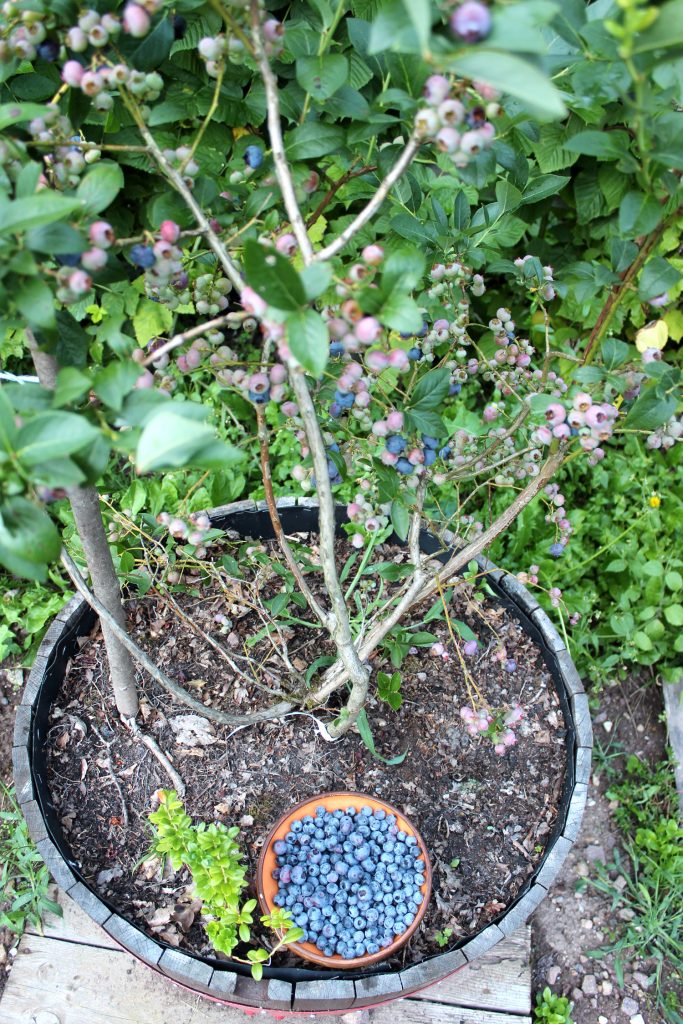
Use and storage of blueberries
We eat most of homegrown blueberries fresh either in the morning, mixed in Greek yoghurt or in the evening as a snack during a new Game of Thrones episode so there isn’t much left for storage. Blueberries can be stored the same as all the berries: cooked in jams, dries or frozen and later used in smoothies, pies or other delicious dishes.
Short blueberry ID:
Special growing needs: require acidic soil
Adult plant height: up to 2m (usually more around 1.5m)
Storing the blueberries: freezing, drying, jams
Why would you want to consume blueberries? Despite the fact that a lot of people still prefer wild, forest blueberries over their cultivated cousins, are homegrown blueberries a great source of antioxidants and numerous vitamins and minerals. They have low caloric value and they help regulating blood sugar and have positive impact on our brain and heart functions.
Not to mention how nice looking are the blueberry shrubs in the garden when they are filled with delicious blue berries!
Conclusion: Very worth of growing (and eating)!
